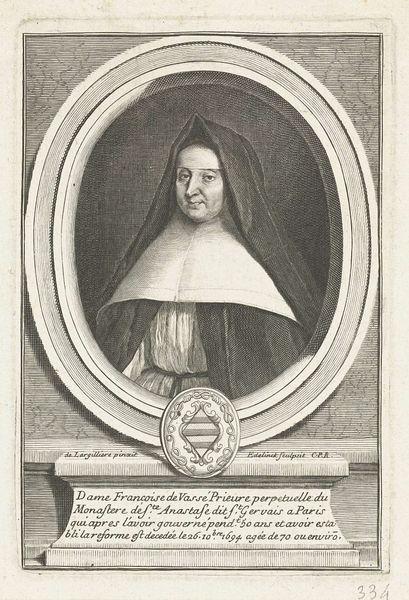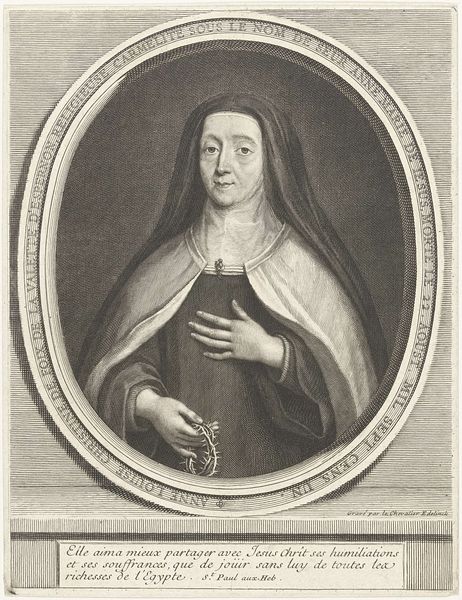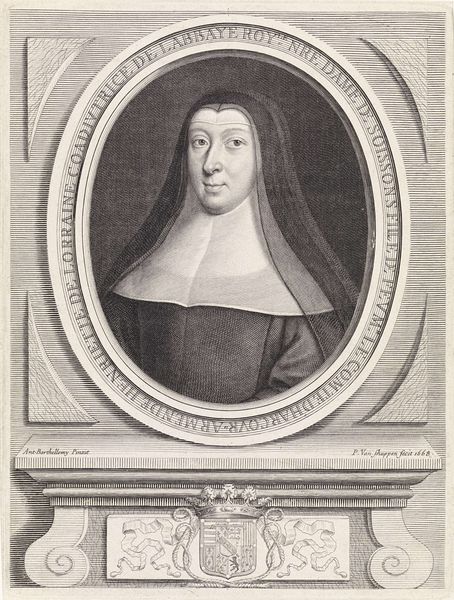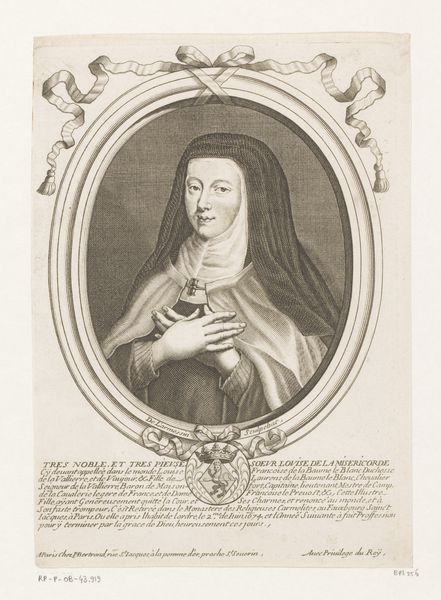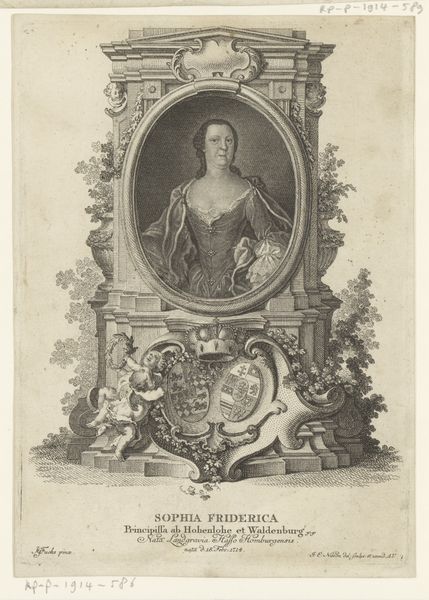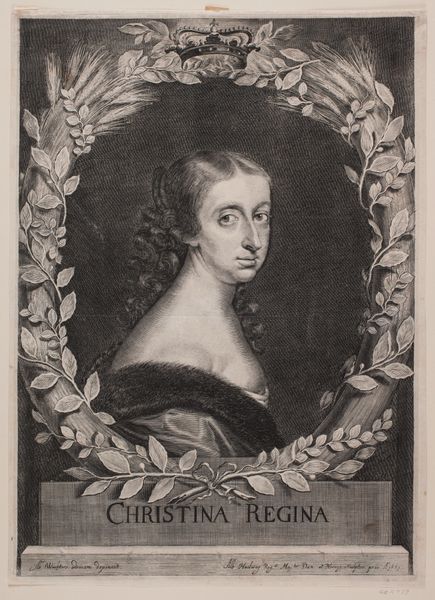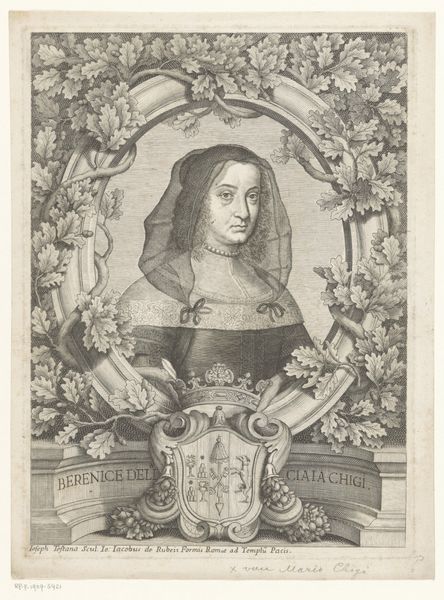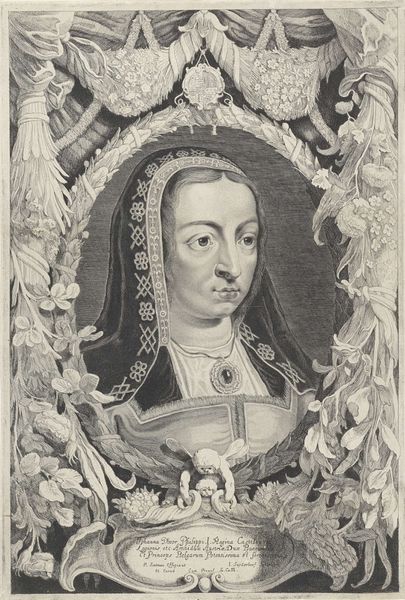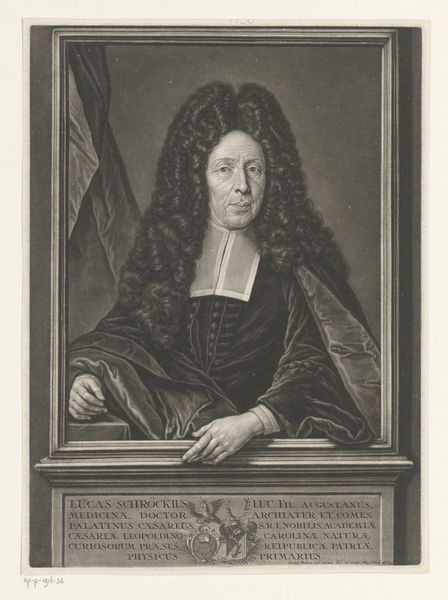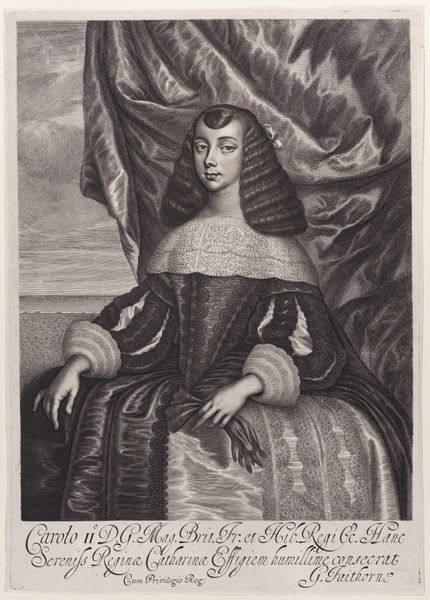
engraving
#
portrait
#
baroque
#
history-painting
#
engraving
Dimensions: height 371 mm, width 238 mm
Copyright: Rijks Museum: Open Domain
Curator: Here we have Jacob Houbraken’s 1743 engraving, "Portret van Louise van Savoye," housed right here at the Rijksmuseum. Editor: It’s arresting; a kind of formal austerity is offset by the ornate detail work. Everything seems incredibly precise and considered. The way the light catches the lower frame. It makes the entire engraving seem so carefully constructed. Curator: Indeed. Consider the circumstances surrounding Louise of Savoy. This wasn't just about aesthetics, it was a visual statement, power codified and carefully displayed during a time when the lines of succession and gender roles were very firmly drawn and dictated political life. How does this composition and style reinforce her role within the highly stratified European society of her era? Editor: That ornate frame feels really loaded when you describe it that way! All that intricate carving implies such a specialized, skilled labor force to make a single artwork, suggesting the enormous wealth and power underpinning these types of images and portraits. Did that fabrication process become more widespread or democratized later on? Curator: Interesting question. The baroque style itself can be seen as an expression of power, especially after the Reformation, which saw religious artwork used to reassert the Catholic Church's authority, but its expression differs across nations. Look at the use of line, and light, but then also consider who was creating it, and the role the woman was playing in public life. Women in leadership often had to balance an interesting negotiation of feminine qualities versus what the people considered “leadership qualities.” The portrait captures something of this push and pull. Editor: It definitely seems to hint at those sorts of contradictions. In terms of engraving as a reproducible medium—thinking about its expanded role later on. Was this always about dissemination, or was there a sort of collecting culture or market emerging here too? How were these engravings consumed in domestic spaces or within different social classes? Curator: Exactly. And what effect did they have on shaping social perceptions? Editor: It all seems very deliberate... What begins to fascinate me are the circumstances, like you mention, of the print's making. How many impressions, what type of press, what sort of inks were used... what this object *is* starts to feel inextricably linked to who she *was*. Curator: Thank you; an extremely valuable point of entry that opens more narratives and connections within the work, allowing us to learn so much more than if we simply glanced at this striking portrait!
Comments
No comments
Be the first to comment and join the conversation on the ultimate creative platform.

